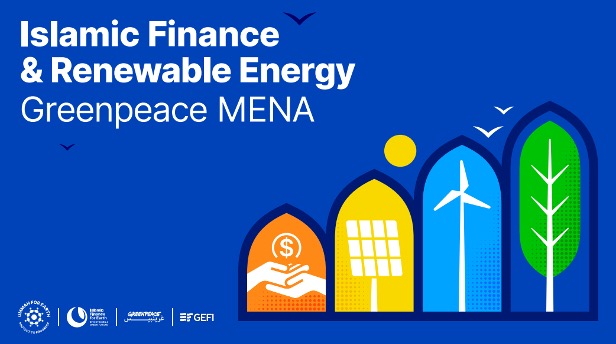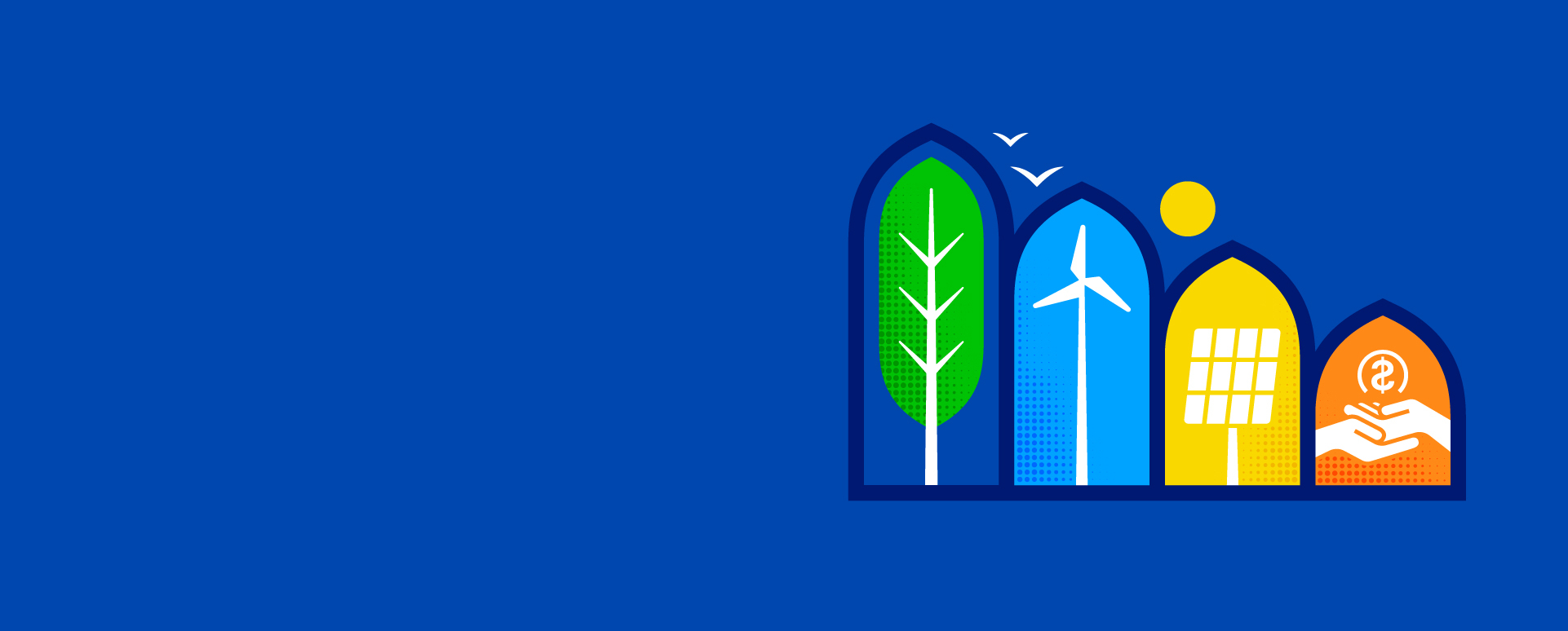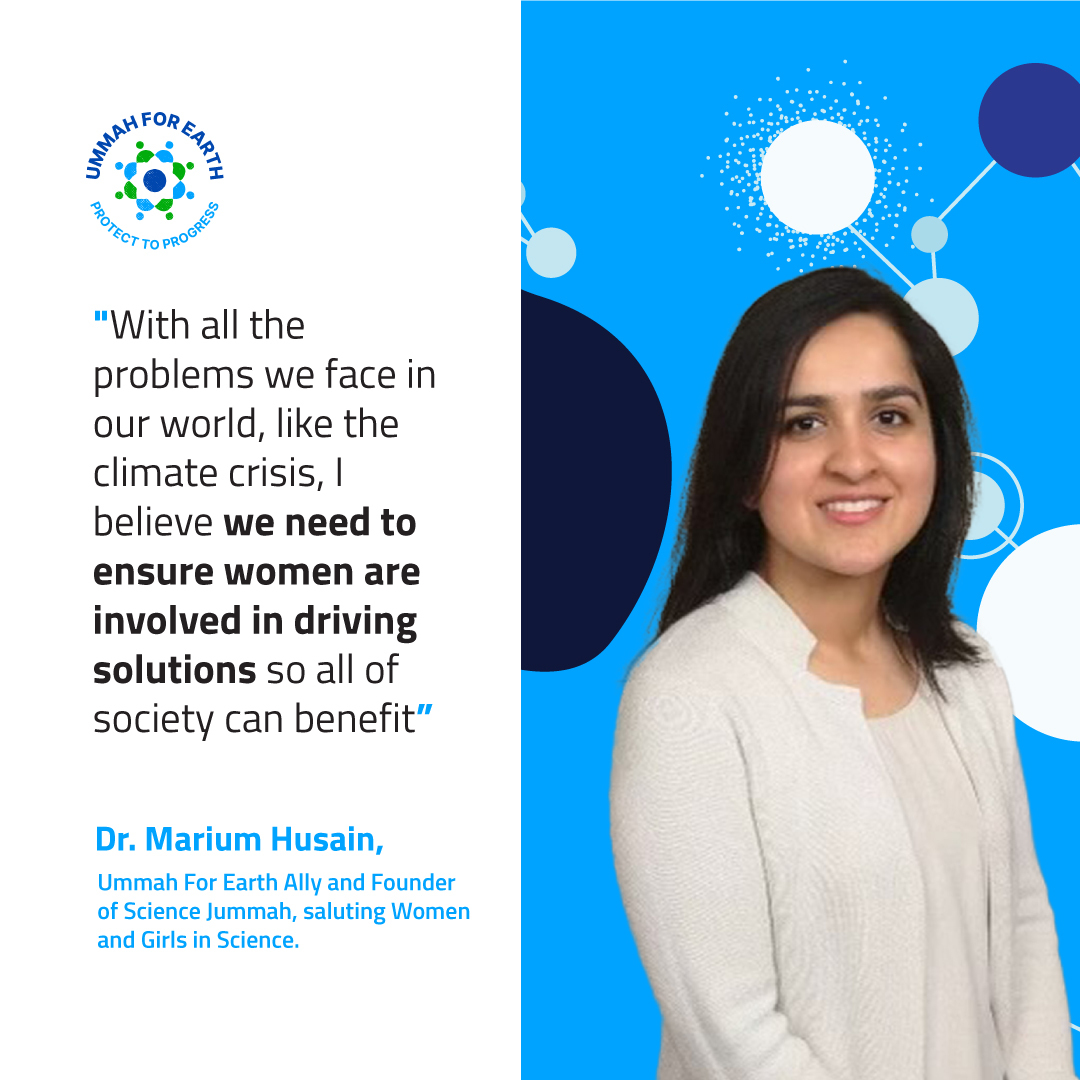What if the financial systems rooted in justice, stewardship, and long-term social good held the key to funding our climate future?

That’s the bold proposition behind a new report from Greenpeace MENA and the Ummah for Earth Alliance. The report reveals that redirecting just 5% of Islamic finance assets toward renewable energy and energy efficiency by 2030 could unlock $400 billion in climate capital. As part of its broader mission to connect faith-based values with systemic climate action, Greenpeace MENA is not only surfacing this insight, but actively developing the tools, frameworks, and partnerships needed to bring it to life at scale. This comes at a critical moment, as the world needs to triple renewable capacity to meet climate goals.
Picture a financial system worth $4.5 trillion where charging interest is forbidden, speculation is off-limits, and every investment must somehow benefit society. It sounds like a thought experiment, but it’s real—it’s Islamic finance.. And right now, it might be sitting on one of the biggest missed opportunities in the transition to a sustainable future.
Here’s the disconnect: 90% of Islamic banking customers say sustainable investment options aligned with UN SDGs are important to them. They’re even willing to pay a median premium of 4.4% for these products. Yet the supply barely exists, with minimal capital flowing toward offerings in the area of renewable energy despite the obvious alignment between Islamic values and environmental protection.
So what’s stopping it?
Understanding the System
First, a quick primer for those unfamiliar with Islamic finance. It’s not just “banking without interest.” The whole system runs on different principles—you can’t make money from money itself (hence no interest), you need real assets backing investments (no excessive uncertainty or speculation), and whatever you invest in has to pass an ethical screen.
If you’re thinking this sounds a lot like ESG investing, you’re not wrong. Except that these rules have been around since the 7th century.
For renewable energy, Islamic finance should be a natural fit. Solar panels and clean infrastructure are real assets with long-term, community-level benefits exactly what this system prefers. And yet, most Islamic banks offer, if any, green investment options. The demand is there, GEFI and UKIFC research confirms it, but the supply side remains thin. The rules align, but the products don’t .
Where Philanthropy Comes In
This isn’t really about a lack of money or even a lack of interest. It’s also a knowledge and infrastructure problem. And that’s exactly where smart philanthropic money can be a catalyst for change.
The market faces a fundamental challenge: Islamic finance professionals and renewable energy experts operate in separate worlds. When Saudi Electricity Company issued the Middle East’s first utility green sukuk in September 2020—a pioneering $1.3 billion deal—it required approval from multiple Shariah advisory boards and marked a breakthrough for the region. Yet each new issuer still faces significant barriers in bridging these two domains.
Indonesia’s green sukuk program offers a compelling blueprint. Through years of capacity building and multisector collaboration, it became the world’s largest sovereign green sukuk issuer, raising over $7.8 billion by 2024. Its 2022 issuance alone is expected to avoid nearly 1 million tonnes of CO₂ annually—demonstrating how Islamic finance can directly support national climate goals at scale.
Meanwhile, the broader green sukuk market is accelerating, reaching over $14 billion in 2024, showing remarkable growth year over year. But this is still a fraction of what’s possible.
Three Places to Start
The report by Greenpeace MENA identifies clear intervention points:
- Getting the right people talking. Islamic finance operates in its own ecosystem. The scholars, bankers, and lawyers rarely overlap with the sustainable finance community. Programs that create experts fluent in both domains can solve this translation problem.
- Backing the pioneers. Indonesia’s success required years of framework development and capacity building. Other countries face the same expensive learning curve. Philanthropic support for this groundwork in emerging markets could replicate Indonesia’s model more efficiently. The report specifically highlights opportunities in Africa and smaller Asian nations.
- Activating patient capital. Islamic charitable endowments (awqaf) have funded community needs for centuries. The report identifies them as providers of “patient, low-cost capital” that can “finance and de-risk renewable energy projects.” These foundations are designed for long-term social benefit—exactly what renewable energy needs. Yet most waqf managers haven’t considered renewable energy investments as an option.
It’s Already Working
Morocco’s Green Mosques Initiative shows the power of aligning religious leadership with climate action: over 100 mosques were retrofitted, cutting energy use by 40% and creating 300 green jobs. Malaysia, meanwhile, mobilized over RM18.9 billion through its SRI sukuk framework thanks to early investment in cross-sector capacity building.
Malaysia has facilitated over RM18.9 billion in SRI (Sustainable and Responsible Investment) sukuk through its comprehensive framework developed since 2014. The key was years of capacity building that created a new generation of experts fluent in both Islamic finance and sustainability.
The momentum is building in the wider sector. The Ummah for Earth Alliance has already reached 78.3 million young urban Muslims online, demonstrating the grassroots demand for aligning faith-led values and economics with climate action. The question is whether the financial system can move fast enough to meet this demand.
A Practical Path Forward
For philanthropic foundations and organizations ready to act, the EDUCATE framework, developed as a practical toolkit to the Greenpeace MENA report, offers a systematic approach:
- Engage: Bring together renewable energy developers, Islamic finance professionals, and Shariah scholars.
- Develop: Create standardized Shariah-compliant sustainability frameworks.
- Utilize: Design and launch new Islamic climate finance products.
- Capacity: Fund training to build institutional expertise.
- Align: Set renewable energy targets aligned with national climate goals.
- Track: Monitor financial and environmental performance.
- Exchange: Enable knowledge sharing across sectors.
Building the Bridge
The climate emergency is particularly acute in regions where Islamic finance dominates. The MENA region contains 12 of the world’s 17 most water-stressed countries. Southeast Asia faces rising seas and extreme weather. These are exactly the places where Islamic finance is strongest—and where climate solutions are also urgently needed.
According to the Global Ethical Finance Initiative, the Islamic finance market is projected to reach $8 trillion by 2030. The tools, frameworks, and successful examples all exist. The gap is in implementation—in building bridges between Islamic finance and renewable energy.
For philanthropists seeking to catalyze systemic change rather than just fund individual projects, this represents an extraordinary opportunity. Not to write checks for solar farms, but to unlock an entire financial system for climate solutions.
The renewable energy transition will happen. But accelerating it—where it matters most—depends on unblocking the power of Islamic finance. Greenpeace MENA, through its Ummah for Earth Alliance, have laid the groundwork. Now is the time to act.



